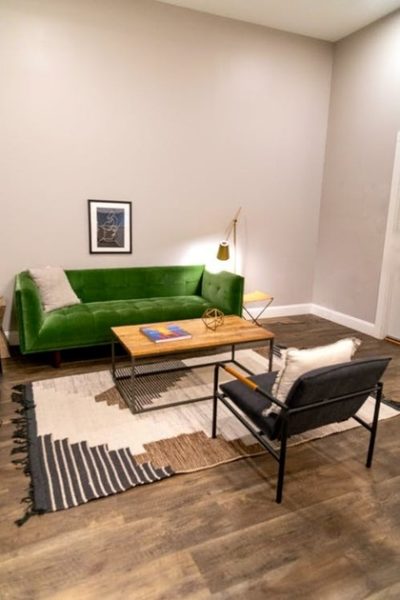The foundation of a home is a safe and sound floor. The concrete structure is a keystone to building a comfortable and healthy place to stay. A source of accidents inside homes is damaged flooring. A polished floor that is not well managed can be too slippery to walk on. The old slabs can be restored with the help of residential flooring contractors.
As homeowners, you need practical and updated solutions. Refinishing and polishing the floors nowadays use advanced technology. Innovative tools and products make fixing the floors easy and cost-efficient.
Here are tips to consider for you to recreate an old concrete floor in your homes. You can naturally give life back to bare cement and brighten up the interior of your property.
1- Filling the Concrete
If your floors at home need a deep facelift due to wear and tear and old age, practical solutions can restore its superior beauty. Concrete is a resilient material that surpasses its lifespan. If cracks had appeared and holes begin to emerge, the first best way to change the flooring is to fill the gaps.
Filling the concrete joints with a fresh mix of concrete saves you from the expensive unearthing of slabs. Why not give immediate fix by filling the damages. This way, your floors’ even and the sturdy surface will be restored.
As you start simply fixing the concrete cracks, you can now add anything that you want to enhance the floor’s form and function.
2- Grinding and Polishing
If you just had old floors removed and the materials you used were linoleum, tiles, or vinyl, then you got residue of the old glued surface to peel and scrub.
The flooring materials mentioned above were a practical choice. They are affordable. They also possess concrete-like strength and resiliency. But when you get tired of their redundant design, you would like to change them either with a new type of finishing or with the same, fresher version of the floor’s top layer.
However, for you to be able to apply a new coating or finishing, you must first grind and polish the slabs underneath. What is hidden beneath matters when trying to recreate your concrete floors at home.
Grinding techniques to restore a floor’s seamless quality can be performed by professional residential flooring contractors. It is wise to call for help, especially for preparing the concrete surface before any refinishing and polishing.
3- Acid- Washing
A very user-friendly solution and suitable for the homeowner is acid washing the floors. Pouring acid, also known as staining, is a technique that can be both used by DIY users and expert floor installers.
Acid-based staining is a perfect fix for cracked concrete. The flaws on the floors become its own asset. With staining, you can expose the neutral grey or whitewashed color of the cement. This is the perfect option for you to restyle your kitchen floors or living room. Making use of neutral or greyish concrete matches a minimalist theme or rustic concepts in an interior.
Acid-washing is a practical choice for refinishing a concrete patio. For exterior concrete finished with staining, a final coating or a top layer of acrylic-based sealers is highly recommended.
If you feel that staining the floors with acid is too limiting, a top layer of concrete coating can be added. For this reason, acid-stained floors are very versatile when it comes to combining it with other flooring materials and techniques.
4- Adding Grout Lines
If you applied a simple polishing and clear coating on the floor, you might accent it with linear patterns using a grout mixture. Either you want to renovate your indoor or outdoor concrete.
Grout mix is accessible and easy to mix, given that you have the appropriate mixing tools. You can prepare a DIY stencil to create even linear frames. Grout lines also add a strong element to the floors. It can serve as a cover-up for minimal cracked lines if ever found on your residential concrete.
5- Refinishing with Dye
A quick and simple refinishing that gives a new look and style to the floors is a dye. Dyeing the concrete floor is through staining as well. You can either first acid wash it, then pour over the dye to make the color penetrate the cement slabs.
Dye on floors is also an easy technique that is very DIY-friendly. Also, by using dye, you can be creative and have freedom on what color to choose. Let your artistic spirit be free when controlling the pigment to attain the shade that you like.
Using acid-based or water-based dye, you can create translucent morphing lines on the concrete. It is a great technique to hide old stains, flaws, or any irregularities on the floor’s surface.






